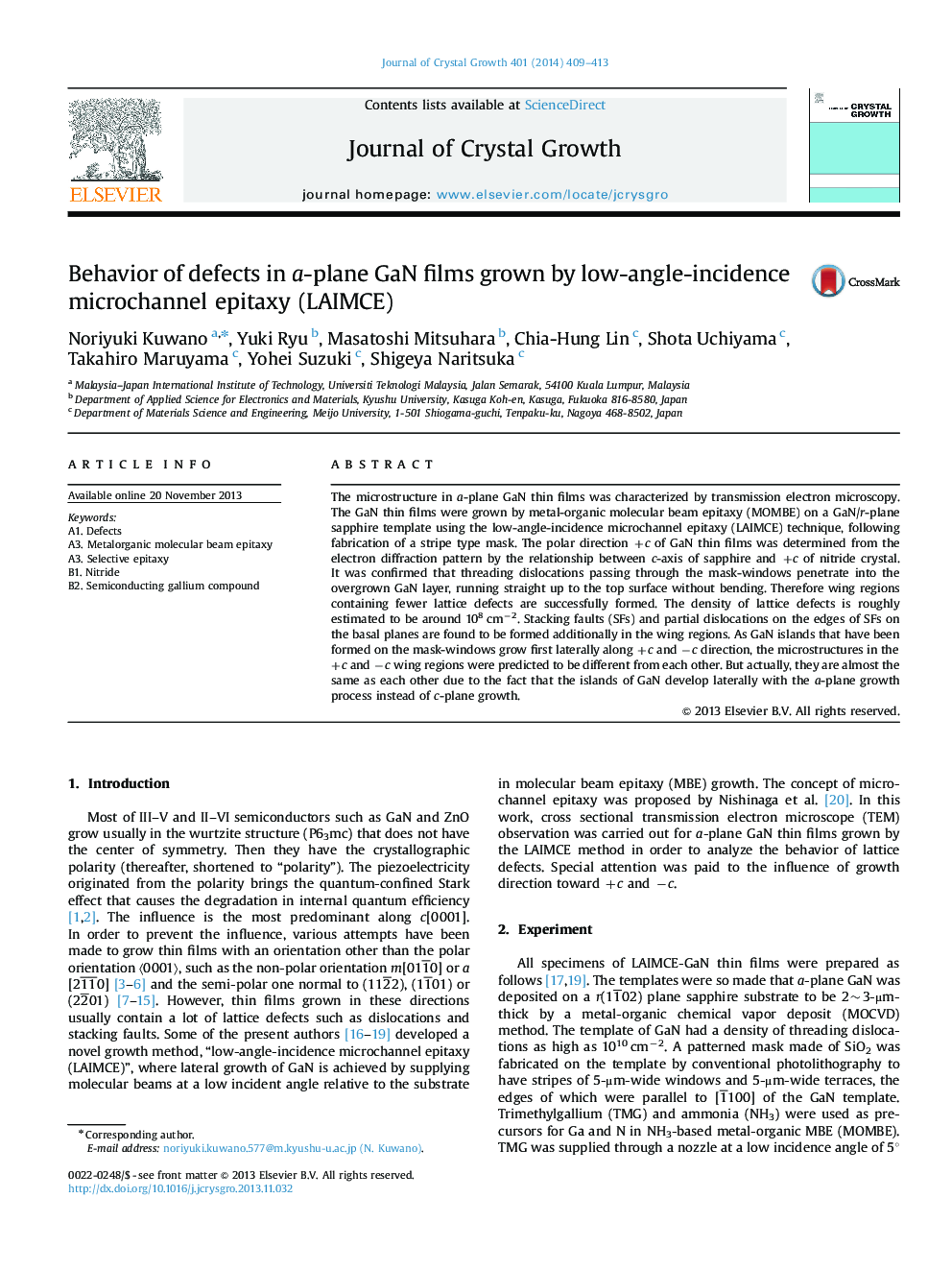| Article ID | Journal | Published Year | Pages | File Type |
|---|---|---|---|---|
| 1790375 | Journal of Crystal Growth | 2014 | 5 Pages |
Abstract
The microstructure in a-plane GaN thin films was characterized by transmission electron microscopy. The GaN thin films were grown by metal-organic molecular beam epitaxy (MOMBE) on a GaN/r-plane sapphire template using the low-angle-incidence microchannel epitaxy (LAIMCE) technique, following fabrication of a stripe type mask. The polar direction +c of GaN thin films was determined from the electron diffraction pattern by the relationship between c-axis of sapphire and +c of nitride crystal. It was confirmed that threading dislocations passing through the mask-windows penetrate into the overgrown GaN layer, running straight up to the top surface without bending. Therefore wing regions containing fewer lattice defects are successfully formed. The density of lattice defects is roughly estimated to be around 108Â cmâ2. Stacking faults (SFs) and partial dislocations on the edges of SFs on the basal planes are found to be formed additionally in the wing regions. As GaN islands that have been formed on the mask-windows grow first laterally along +c and âc direction, the microstructures in the +c and âc wing regions were predicted to be different from each other. But actually, they are almost the same as each other due to the fact that the islands of GaN develop laterally with the a-plane growth process instead of c-plane growth.
Related Topics
Physical Sciences and Engineering
Physics and Astronomy
Condensed Matter Physics
Authors
Noriyuki Kuwano, Yuki Ryu, Masatoshi Mitsuhara, Chia-Hung Lin, Shota Uchiyama, Takahiro Maruyama, Yohei Suzuki, Shigeya Naritsuka,
